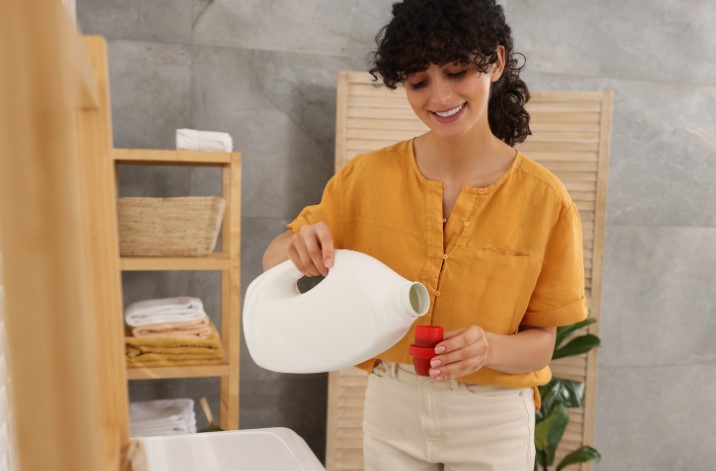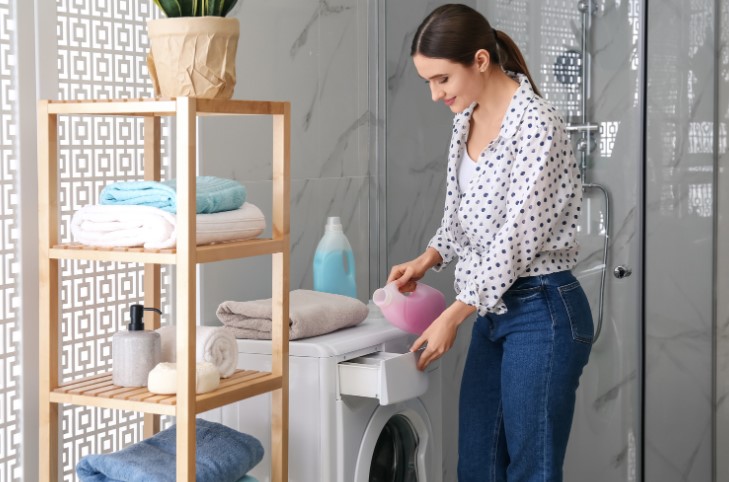- Why is the fabric softener compartment full of water?
- How does the siphon mechanism work in the softener drawer?
- How often should I clean the softener drawer?
- Where is the siphon tube and how do I clean it?
- Can machine alignment affect softener drainage?
- What routine steps should I follow to fix it?
- When should I consider replacing parts or calling an engineer?
- How can I prevent water from pooling in the future?
- Conclusion – How I fixed and avoided “fabric softener compartment full of water”?
- FAQ on Fabric Softener Compartment Full of Water
I recently noticed something odd after doing a load of laundry: the fabric softener compartment was full of water. At first, I thought it might be a one-off issue, but after several washes, the problem persisted.
If you’re experiencing the same, then don’t worry, we are here to solve. This issue is quite common, and in most cases, it’s completely fixable without calling an engineer.
Why is the fabric softener compartment full of water?
The design of most UK washing machines includes a siphon mechanism in the detergent drawer. The siphon is the one that pulls the liquid fabric softener into the drum during the rinse cycle.
When this mechanism gets blocked or fails to operate properly, water starts pooling in the compartment instead of draining away.
How does the siphon mechanism work in the softener drawer?
The fabric softener area contains a siphon tube and a small cap or insert. During the rinse cycle, water flows through dedicated jets that flush the fabric softener from the compartment into the drum.
As the water rises in the compartment, it reaches the siphon point, starting the siphon action that quickly drains the liquid. If the siphon is clogged or the cap is misaligned, this process breaks down.

Why does water stay in fabric softener compartment after the cycle?
Several factors can cause this:
- Blocked siphon tube: Softener residue, mould, or limescale can obstruct the siphon.
- Misaligned siphon cap: A displaced or loose siphon cap can prevent proper draining.
- Clogged inlet jets: These jets may get blocked by detergent build-up.
- Water pressure issues: Weak water flow can disrupt the siphon mechanism.
- Machine tilting forward: A mislevelled machine can affect drainage.
How often should I clean the softener drawer?
Honestly, I used to ignore my detergent drawer entirely. But after seeing the build-up inside, I now clean it every couple of months.
Residue from concentrated softeners can be sticky and lead to blockages. Cleaning helps prevent issues with both drainage and odours.

Where is the siphon tube and how do I clean it?
To find and clean the siphon:
- Remove the detergent drawer completely by pressing the release tab.
- Locate the siphon insert in the fabric softener compartment (usually a plastic cap or cover).
- Remove the siphon insert and soak it in warm, soapy water.
- Use a soft brush or old toothbrush to scrub away softener buildup.
- Clean the compartment and rinse everything thoroughly before reassembling.
A quick test: after reassembling the drawer, pour some water into the softener compartment. If it drains immediately, you’ve fixed it.
Can machine alignment affect softener drainage?
Yes—and this surprised me. I found that if the washing machine leans too far forward, it can affect the siphoning action.
Make sure your machine is level both front-to-back and side-to-side. Use a spirit level on the top surface and adjust the feet if needed.
What routine steps should I follow to fix it?
Here’s my simple checklist:
- Remove the detergent drawer
- Take out and clean the siphon insert
- Scrub jets and compartment with warm water and an old toothbrush
- Soak parts in vinegar if there’s limescale
- Reassemble and test drainage with water
- Level the machine if necessary
When should I consider replacing parts or calling an engineer?
If cleaning doesn’t solve the issue, consider these possibilities:
| Problem | Possible Fix |
| Broken siphon insert | Replace the insert |
| Malfunctioning inlet valve/solenoid | Call a technician |
| Internal blockage in dispenser tube | Professional service may be needed |
Only after these checks would I recommend calling in a repair expert. Most times, a deep clean does the trick.

How can I prevent water from pooling in the future?
To keep your machine running smoothly:
- Clean the drawer every 6–12 weeks
- Use diluted softener instead of pouring it in thick
- Leave the drawer open slightly after washes to let it air dry
- Avoid overfilling the softener compartment
- Check and clean inlet jets during each clean
These small habits can make a huge difference in avoiding future drainage issues.
Conclusion – How I fixed and avoided “fabric softener compartment full of water”?
Fixing the issue of a fabric softener compartment full of water turned out to be easier than I expected. Once I understood how the siphon system worked and gave the drawer a thorough clean, the problem vanished.
Regular cleaning and machine checks have now become a part of my laundry routine. If you’re dealing with this, take 20 minutes and follow these steps—you’ll likely solve it yourself without needing a repair call.
Related Article: What Are the 3 Compartments in a Washing Machine Drawer Bosch?
FAQ on Fabric Softener Compartment Full of Water
1. Can using too much fabric softener cause water to remain in the compartment?
Yes. Overfilling the fabric softener compartment can overwhelm the siphon mechanism, preventing it from draining properly. Always follow the fill line marked in the drawer.
2. Is it safe to use the washing machine if the fabric softener compartment stays full of water?
It’s generally safe for one or two cycles, but prolonged use without addressing the issue may lead to mould, odours, and inefficiency. It’s best to fix the problem promptly.
3. Do all washing machines have the same softener compartment design?
No. While most UK machines use a similar siphon-based system, designs can vary by brand. Some newer models have removable trays or self-cleaning mechanisms that help reduce buildup.


0 Comments